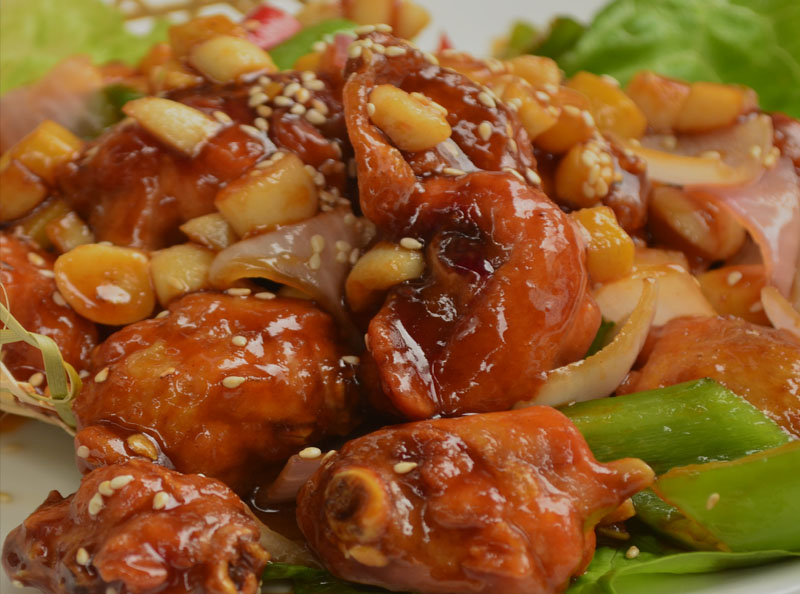

The last stop would be Fogo Island, where I hoped to visit Huang at the mysterious Kwang Tung Restaurant. From there, I would make my way east across a 2 ½-week period, roughly tracing the path of the railway. I'd start on the West Coast, where the earliest wave of Chinese settlers began arriving in 1858. So I set out a plan: to drive across the country, visiting as many small-town Chinese restaurants as possible. I wanted to know how she wound up there alone. I became determined to find Huang, to understand how she ended up running a Chinese restaurant on Fogo Island.

She ran the restaurant seven days a week, by herself: "She lives upstairs so basically she never leaves." According to the caption, her name was Huang Feng Zhu. She looked to be in her 50s, dressed simply in a T-shirt, dark slacks and grey sneakers. In front of the restaurant stood a woman with short black hair. This photo of owner Huang Feng Zhu posing in front of Kwang Tung Restaurant in Fogo Island, Nfld., inspired the writer’s journey. Above the door hung a Pepsi sign, with the restaurant's name etched in Charlie Chan-style lettering. A photographer from Montreal had visited the restaurant a few years ago, capturing an image of a faded white building. I scoured the Internet for more information.Īn image search revealed one last clue. I had so many questions: Why would these restaurant owners take the gamble to leave everything behind for this new place? Why open a Chinese restaurant, and why in a small town? And why does just about every Canadian town have its own Chinese restaurant? I was especially intrigued by Kwang Tung: Fogo Island was probably the most isolated place I could imagine – and one of the least diverse. Just about every town across the country, I learned, has its own Chinese restaurant – according to some estimates, more Chinese restaurants than all fast-food restaurants combined. Newcomers are still arriving in Canada and still moving to small towns to open Chinese restaurants. The curling-rink location of Ling Lee’s Chinese Cuisine, with a backdrop of a mural depicting historical figures throwing curling stones, helps make it part of the fabric of the community in Thunder Bay, Ont.Īnd, she said, they aren't disappearing. For a century and a half, they have been quintessential small-town Canadian institutions. They create jobs and opportunities for newcomers and they fill a void for the entire community, often providing services and infrastructure that don't otherwise exist. These restaurants serve many purposes, said Cho. Of course there are Chinese-American restaurants in the United States, but the story up here – from the way the restaurants spread across the country along with the railroad, to the invention of dishes like Alberta ginger beef and Thunder Bay Bon Bon ribs – is uniquely Canadian. "They are, in very much a weird way, a Canadian thing," said Lily Cho, a York University professor who has written a book on Chinese restaurants. But, at least on Fogo Island, that didn't seem to be the case. I had assumed the small-town Chinese restaurant was a fading piece of the country's history, a relic of the past. Now living in Toronto, I've witnessed first-hand the rapid development of very diverse Chinese cuisines in this city, too. I would listen as relatives argued about which dim sum restaurant's har gow wrapper was the thinnest, or whose xiao long bao the juiciest. A mix of ideas both East and West and, to my eyes, frozen in time.įor my family, and every other Chinese family I knew growing up in Vancouver, food was an obsession. The name "chop suey" translates more or less into "assorted mix," and refers to a repertoire of dishes mostly developed in North America in the mid-20th century.

This was "chop suey" cuisine, which is distinct from "authentic" Chinese food. "Good in that guilty pleasure kind of way." "Chinese Canadian food," the writer proclaimed. There was also a photo of the Kwang Tung menu, an inventory of Chinese-Canadian classics: sweet and sour won tons, moo goo guy pan and a long list of dishes dredged in batter, deep-fried and coated in sweet, sticky, vaguely spicy sauces. How did the restaurant wind up there? Why would someone decide to open a Chinese restaurant on Fogo Island? The post included a photo of a plate of food: a deep-fried egg roll, its blistered surface laid atop brown fried rice. I first learned of Kwang Tung after stumbling across it in a food blog post titled " I can't believe there's a Chinese restaurant in Fogo." Like the author, I was bewildered.


 0 kommentar(er)
0 kommentar(er)
